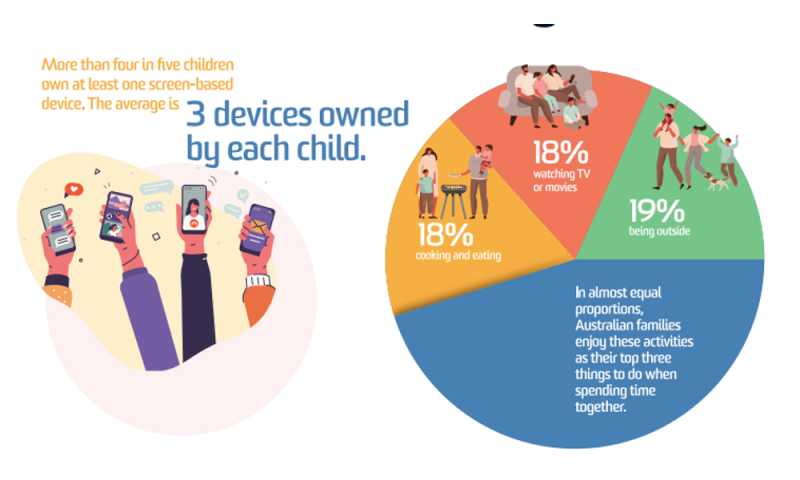
More than nine out of ten parents think digital media and technologies are a negative distraction in their lives. And 83% think their children are also negatively distracted by digital devices.
These are some of the findings from our Growing Up Digital Australia study. In 2020 we surveyed nearly 2,500 parents, grandparents and caregivers across Australia. This yielded data about 5,000 children aged 5-17 on their use of digital devices at home during the pandemic.
Our study shows more than 80% of children in this age group own a screen-based device and that children today, on average, have three different digital devices. Our data show children start owning devices from as early as four years old.
Only 46% of parents said their child could spend a whole day without using a digital device.
One parent told us: “It is addictive. I yearn for more time away from it for me and my family.”
But we found positives too. Most parents believe the impact of digital media and technologies on their children’s maths, reading abilities, social skills and friendships is more positive than negative.
And 90% of parents feel digital technologies make it easier to stay in touch with family and friends.
Digital dependency
Learning and working from home during the pandemic made digital tools more common among children and parents. Smartphones and laptops connected to the internet have been a lifeline for many families during the past year or so.
At the same time, our research shows, most families seem to suffer from drawbacks associated with being dependent on digital media at home.
One parent said about her teenage daughter: “I am concerned at the amount of time my daughter spends on her phone. She is no longer interested in the activities she used to enjoy before she had a phone.”
Our earlier research showed 84% of Australian teachers observed students being distracted by digital media and technologies. And three out of five believed students weren’t ready to learn when they came to school.
Our new data suggest a relationship between young people’s educational performance and how frequently they sleep with a device. Almost 60% of parents whose child was struggling with school say they always allow them to use digital devices in bed.
About one-third of Australian parents said their children go to bed with a smartphone or other device every night. This was more common in lower-income families. In general, children in low-income families use digital devices more, with less parental guidance.

Many parents also told us they hoped schools would focus more on children’s digital well-being and cybersafety.
One parent said: “As a parent I need to know how to work the programs and sites the kids access to be able to protect them. I do not assume they are safe.”
What parents say about their own use
Most families use digital devices as a babysitter to help them get things done at home. Our survey shows more than half of parents mainly use digital devices to entertain their kids, and only one in five use them mostly to support learning.
Around 72% of parents said they recognize their own digital habits influence those of their children.
Parents often have different views about their children’s use of digital devices. 65% of parents said they find themselves disagreeing with their partner about how best to set limits and regulate their children’s use of technology.
This is what we all can do
With physical distancing affecting our social interactions, time spent on watching TV and using other digital devices has significantly increased. For example, the Royal Children’s Hospital’s National Child Health Poll, found half of Australian children had spent more time on digital screens for entertainment in June 2020 compared to the same period before the COVID-19 pandemic. And 42% of children spent less time being physically active.
This is not a simple challenge to solve. Certainly, one-size-fits-all solutions like turning off the home wi-fi or hiding digital devices from children rarely work.
But there are some small steps all families can try. The key is that we all must take those steps together.
Source: Read Full Article
